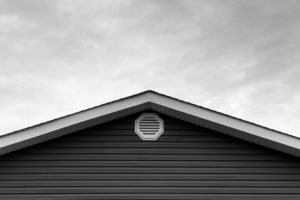You may have looked at your roof and noticed a few pipes or vents sticking up from the top of your house. While most people pay little to no attention to these roof protrusions, they are really quite important. They may be roof vents.
Roof vents are pretty important for the overall health and efficiency of a home. Do you know if you have a roof vent? Maybe you don’t, but are considering having one installed? Learn more about roof vents and why your home is missing out if you don’t have one already.
Why Are Roof Vents Important?
If you’re a homeowner with attic space, you may have noticed that your attic gets very warm during the summer months. If you’re like many people, your roof may not have proper ventilation. At first this may seem unimportant. After all, why does your attic need ventilation? All you store up there is boxes of Christmas decor and your golf bag from six years ago. So why are they so important after all?

Roof vents promote proper ventilation. Proper ventilation in your attic will help in making sure that your stored belongings are kept safe and sound all year long. While roof vents aren’t only responsible for lowering the scorching temperatures in the summer months, they are also used during the wet, winter months to keep moisture levels under control. Let’s dig a little deeper into how roof vents promote proper ventilation.
Heat & Humidity Control
During the summer months, temperatures in your attic can easily reach over 120 degrees fahrenheit for several hours of the day. If you have stored your belongings in your attic during the warmer months, you may have noticed that candles melted, wood bowed, paint colors ran or faded, and so much more. In fact, in can be quite dangerous for certain stored items to remain in such extreme temperatures in your attic without proper ventilation. This problem could be solved by installing a roof vent.

Cold & Condensation Control
During the winter months, temperatures are colder than usual outside. Even in Tennessee’s moderate winters, the sudden change in temperature outside can cause condensation inside your attic. This condensation can soak your insulation and damage your stored belongings depending upon the ventilation available. Once again, this could be solved with the use of a roof vent. They can even lower your risk of developing ice dams on your roof!
How Many Roof Vents Do I Need?

Now that you know what roof vents actually do, let’s talk about how many your home needs. A good rule of thumb is to install one roof vent for every 300 square feet of attic floor space. This may mean that you need to measure your attic floor space and do your calculations to be sure you have an adequate amount of roof vents installed. A professional roofing company would also be a great resource when trying to determine the placement and type of roof vent that would be best for your house.
What Type Of Roof Vent Do I Need?
There are several kinds of roof vents. However, we recommend discussing each type with your roofing company to make sure that the roof vent you choose fits your roof correctly and that it is placed correctly. Here are some popular roof vent types:
Ridge Vents

Ridge vents run along the peak of your roof and have no moving parts. They are very common with shingle roofs and are pretty efficient in letting heat escape and keeping ice and snow out. You can’t reuse them if they are ever damaged, but they can be easily replaced by a professional roofing company.
Static Vents

Static vents also have no moving parts. They come in various designs — roofline, dormer, roof louver, or eyebrow vents—and are installed in an even line across the roof.
Gable Vents

Gable vents are one of the most common roof vents on the market. They are intended to be noticed and are oftentimes incorporated in the roof/house design. Many homeowners incorporate a gable vent along with other roof vents to maximize the efficiency of their ventilation system.
Wind Turbine Vents

Wind turbine vents are quite interesting and are designed with efficiency in mind. The wind turbine vents actually use the wind in the air to suck the hot air and condensation out of the hot attic. These types of roof vents are excellent in areas where wind is present most of the time. For areas where little to no wind is found, people resort to power-assisted vents to ensure that the heat and humidity are removed from their attic.
Maintenance For A Roof Vent

Just like anything else, a roof vent needs to be regularly checked and maintained for it to be efficient. Spring and summer storms can cause damage to roof vents with flying debris, hail, and high winds. The winter months can also be hard on roof vents, especially in climates where excess snow and ice accumulate.
As you know, climbing on your roof can be very dangerous. We recommend calling a professional roofing company to come out and take a look at your roof vents. While they’re on your roof, the can clean the vents from birds nests, spider webs, dust, pollen, and just about any other trapped debris. The professional roofer can also make sure that the flashing is secure and that no rust is starting to take over the roof vents themselves.
Now that you know more about roof vents and why they’re important, you can be proactive in protecting your home and your stored belongings from scorching heat, damaging humidity and the condensation that comes with winter months. If you are ready to install a roof vent, or if you already have one that just needs to be maintenanced, give us a call! We would be happy to help make sure that your roof ventilation is working as efficiently as possible.